As devoted pet parents, we often want to share our meals with our canine companions. However, some of the most common human foods can be detrimental, even dangerous, to dogs. Understanding what your dog can and cannot eat is crucial for their well-being. Pet poisonings are a significant concern, with over 401,500 cases reported annually in the United States, and food-related incidents are a major contributor. This guide serves as your essential resource to identify hazardous foods and ensure your furry friend stays safe and healthy.
A dog’s digestive system and metabolism are vastly different from ours. Certain substances that humans process with ease can be problematic for dogs, leading to illness or even fatal outcomes. For instance, the theobromine and caffeine found in chocolate are metabolized much slower by dogs, allowing them to build up to toxic levels. Similarly, while cherries themselves are harmless, their pits, stems, and leaves contain cyanide, which can be dangerous if ingested in sufficient quantities. Furthermore, the hard pits can cause digestive upset. It’s important to remember that toxicity can also be influenced by a dog’s size, breed, and existing health conditions. Always consult your veterinarian if you have any doubts about a specific food.
Dangerous Foods Your Dog Must Avoid
Many everyday human foods pose a significant risk to dogs, ranging from mild discomfort to severe poisoning. While this list is extensive, it’s not exhaustive. Always exercise caution and err on the side of safety when it comes to your dog’s diet.
1. Alcohol
The smaller stature of dogs makes them far more susceptible to the effects of alcohol. Even minimal amounts can lead to serious health issues, including vomiting, respiratory distress, coma, and even death. The smaller the dog, the greater the risk.
2. Apple, Apricot, Cherry, and Plum Seeds/Pits
While the flesh of apples is safe, the core and seeds should be avoided. They contain cyanide, and while small amounts may not cause immediate harm, it’s best to eliminate the risk. The pits of apricots, cherries, peaches, and plums also contain cyanide and can cause severe gastrointestinal issues, irregular heartbeats, seizures, and in critical cases, death due to the inability of red blood cells to transport oxygen effectively.
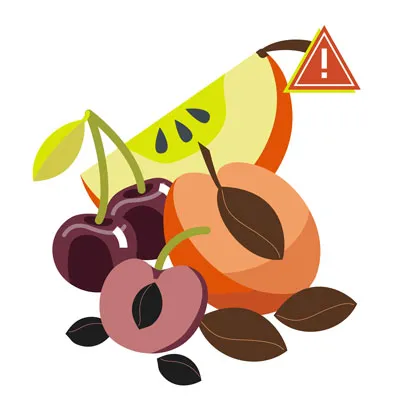 Apple, Apricot, Cherry, & Plum Seeds/Pits
Apple, Apricot, Cherry, & Plum Seeds/Pits
3. Avocado
Avocados are not suitable for dogs. While direct evidence of severe toxicity in dogs is debated, the persin content in avocados can cause gastrointestinal upset. More critically, an intact avocado pit presents a serious choking and obstruction hazard within the digestive tract.
 Avocado
Avocado
4. Broccoli
In large quantities, broccoli can be problematic for dogs due to its isothiocyanate content, which can cause gastric irritation. While small, occasional servings might be tolerated, it’s generally safer to opt for other readily available healthy options. Additionally, broccoli stalks can be a choking hazard.
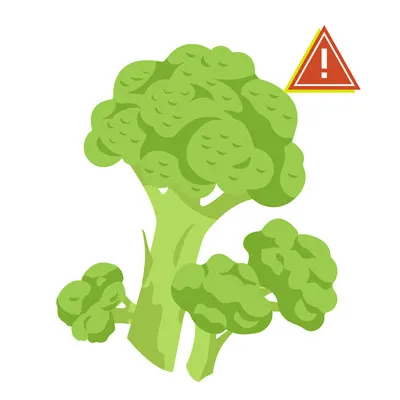 Broccoli
Broccoli
5. Caffeine and Coffee Grounds
Caffeine, found in coffee, tea, and some sodas, contains methylxanthines. These stimulants can lead to severe vomiting, diarrhea, rapid heart rate, seizures, and even death in dogs. Ingesting coffee grounds or caffeine-rich beverages can cause significant distress.
 Caffeine & Coffee Grounds
Caffeine & Coffee Grounds
6. Fatty Meats, Chicken/Turkey Skin, and Ham
High-fat foods, such as fatty cuts of meat, chicken or turkey skin, and ham, can trigger acute pancreatitis in dogs. This painful and potentially life-threatening condition can lead to severe complications. It is crucial to also avoid turkey and chicken bones, as splintered bones can cause internal damage and infections.
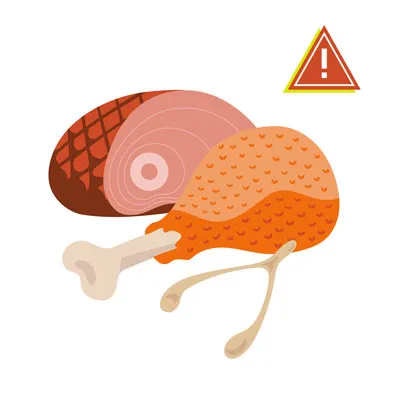 Chicken & Turkey Skin, Ham, & Other Fatty Cuts of Meat
Chicken & Turkey Skin, Ham, & Other Fatty Cuts of Meat
7. Chocolate
Chocolate is a well-known toxin for dogs due to its theobromine content. The darker the chocolate, the higher the concentration of this harmful compound. Symptoms can range from hyperactivity and vomiting to seizures and cardiac arrhythmias. Even small amounts can be dangerous, and prompt veterinary attention is essential. Remember that some sugar-free chocolates may also contain xylitol, which is highly toxic.
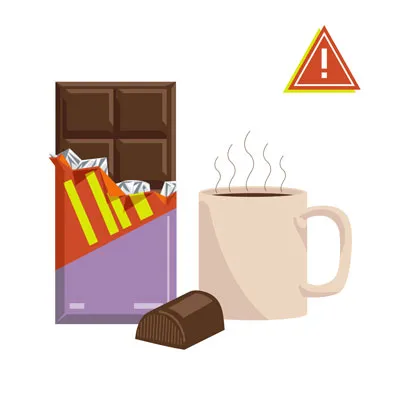 Chocolate
Chocolate
8. Grapes and Raisins
These seemingly innocent fruits are extremely dangerous for dogs and can cause sudden kidney failure. The exact toxic component is unknown, but even a small quantity can have devastating effects. Symptoms include vomiting, diarrhea, loss of appetite, and changes in urination.
9. Macadamia Nuts, Almonds, and Pistachios
Macadamia nuts are particularly toxic to dogs, causing weakness, tremors, vomiting, and hyperthermia. While the precise mechanism is unclear, even a small number can lead to severe poisoning. Almonds and pistachios, while not as overtly toxic, pose choking hazards and can cause digestive upset if consumed in large quantities, especially if they are salted or seasoned.
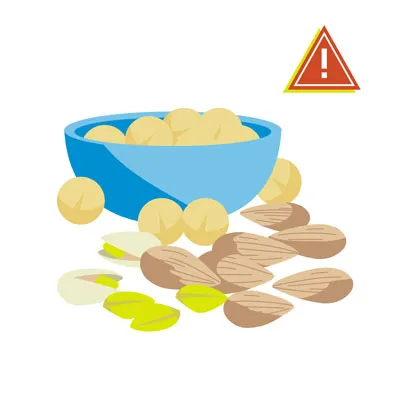 Macadamia Nuts, Almonds, & Pistachios
Macadamia Nuts, Almonds, & Pistachios
10. Milk and Dairy Products
Many dogs are lactose intolerant, meaning they lack the enzyme to properly digest lactose. Consuming milk and dairy products can result in gas, bloating, and diarrhea. While small amounts of low-fat cheese might be tolerated by some dogs, it’s best to offer them sparingly.
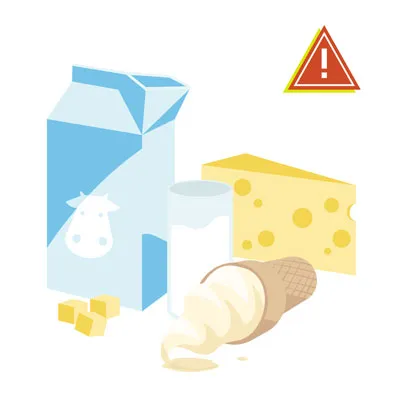 Milk & Dairy Products
Milk & Dairy Products
11. Mushrooms
Wild mushrooms are unpredictable and can contain various toxins that lead to liver and kidney failure, gastrointestinal upset, or neurological issues. It is best to avoid all mushrooms, even those found in grocery stores, to prevent accidental ingestion of toxic varieties.
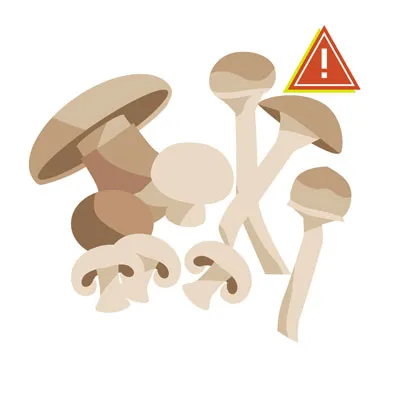 Mushrooms
Mushrooms
12. Nutmeg and Cinnamon
Nutmeg contains myristicin, which can cause hallucinations and severe vomiting in dogs, especially in larger doses or smaller breeds. Cinnamon, while not as toxic, can irritate a dog’s mouth and digestive tract, and in excessive amounts, may lead to low blood sugar.
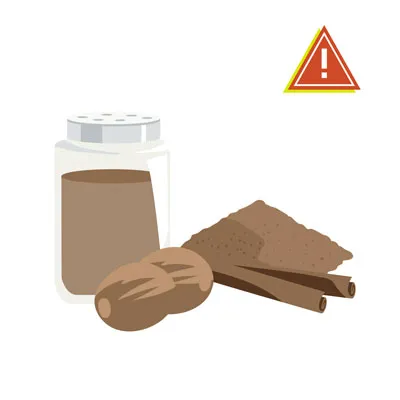 Nutmeg & Cinnamon
Nutmeg & Cinnamon
13. Onions, Garlic, Chives, and Leeks
These members of the allium family contain compounds that damage red blood cells, leading to anemia. This applies to all forms, including powders, which are often found in processed foods. Certain dog breeds, like Akitas and Shiba Inus, are particularly sensitive, but these foods are dangerous for all dogs.
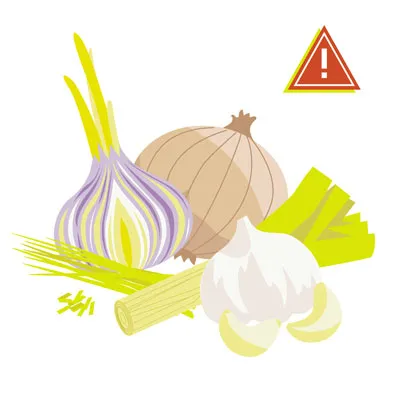 Onions, Garlic, Chives, & Leeks
Onions, Garlic, Chives, & Leeks
14. Salt
Excessive salt intake can disrupt a dog’s electrolyte balance, leading to tremors, seizures, diarrhea, and even coma. Avoid giving your dog salty snacks like potato chips or pretzels.
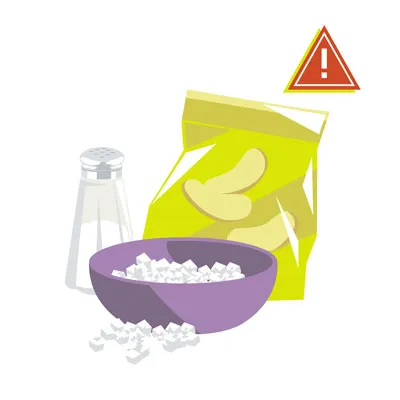 Salt
Salt
15. Spicy Food
Spicy foods can cause significant gastrointestinal distress in dogs, leading to vomiting, stomach ulcers, and painful diarrhea. It’s best to keep your dog’s palate far from anything with a kick.
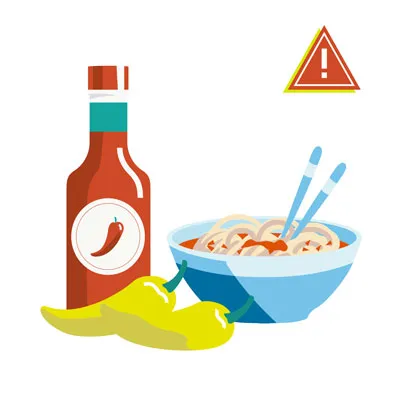 Spicy Food
Spicy Food
16. Sugar-Free Gum and Candy (Xylitol)
Xylitol, an artificial sweetener common in sugar-free products, is extremely toxic to dogs. It causes a rapid and dangerous drop in blood sugar and can lead to liver failure. Even a small amount of xylitol, such as that found in a few pieces of gum, can be lethal for a medium-sized dog.
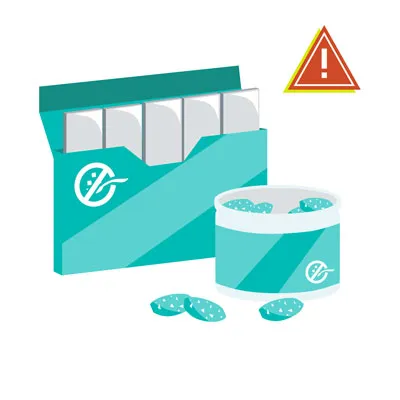 Sugar-Free Gum & Candy (Xylitol)
Sugar-Free Gum & Candy (Xylitol)
17. Tomatoes and Raw Potatoes
While ripe tomatoes are generally safe, the green parts of the tomato plant, including unripe tomatoes, contain solanine, which is toxic to dogs. Similarly, raw potatoes contain solanine. Cooked potatoes without additives are generally safe in moderation.
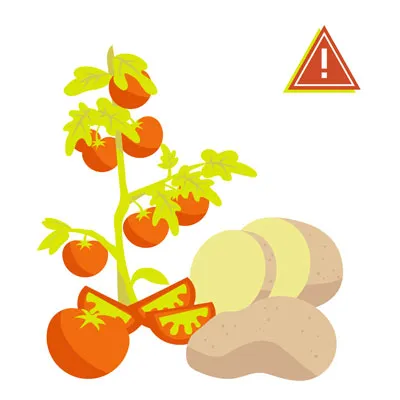 Tomatoes & Raw Potatoes
Tomatoes & Raw Potatoes
18. Tobacco
Nicotine in tobacco products is highly toxic to dogs. Ingestion can cause vomiting, diarrhea, rapid or labored breathing, tremors, seizures, and potentially coma or death. Any exposure to tobacco, including cigarette butts, requires immediate veterinary attention.
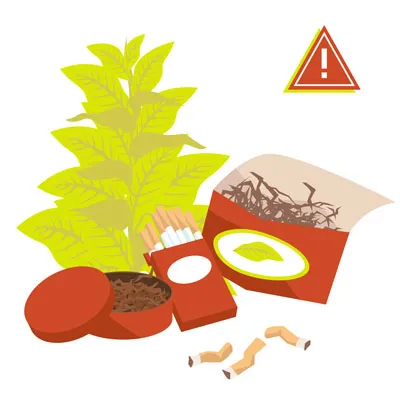 Tobacco
Tobacco
19. Yeast and Raw Dough
Raw dough is dangerous because the yeast will ferment in your dog’s stomach, producing alcohol and causing the dough to expand. This can lead to severe pain, bloating, stomach torsion, rupture, and alcohol poisoning.
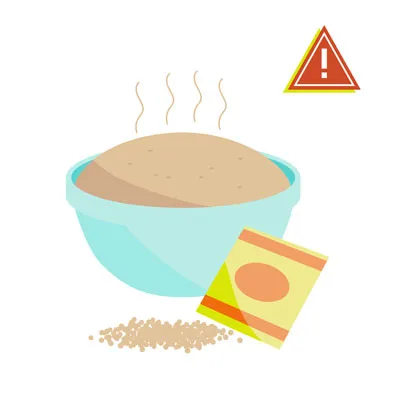 Yeast & Raw Dough
Yeast & Raw Dough
20. Raw Meat
Feeding your dog raw meat carries the risk of bacterial infections like Salmonella and E. coli, which can affect both the dog and humans in the household. Additionally, bones in raw meat can splinter and cause internal damage or become a choking hazard. Understanding what meat bones dogs can eat is important, but raw meat itself presents significant risks.
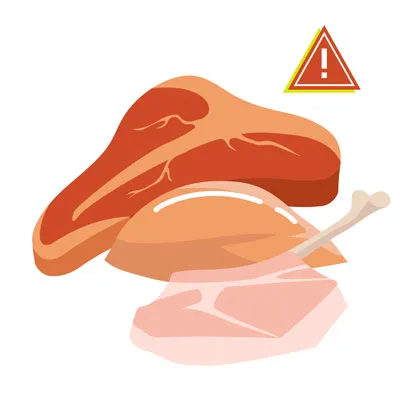 Raw Meat
Raw Meat
21. Rhubarb
Rhubarb contains soluble calcium oxalate crystals, primarily in its leaves. Ingesting enough rhubarb can lead to dangerously low calcium levels, potentially causing kidney failure. Symptoms include tremors, weakness, drooling, and changes in urination.
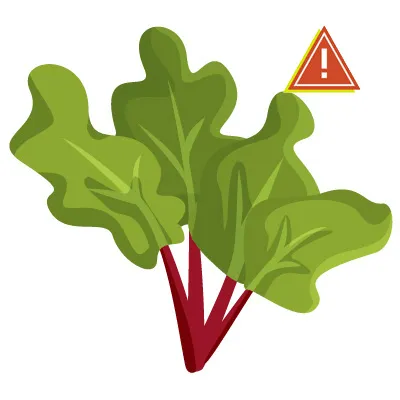 rhubarb
rhubarb
22. Star Fruit
Similar to rhubarb, star fruit also contains soluble calcium oxalate crystals, making it a risky choice for canine consumption.
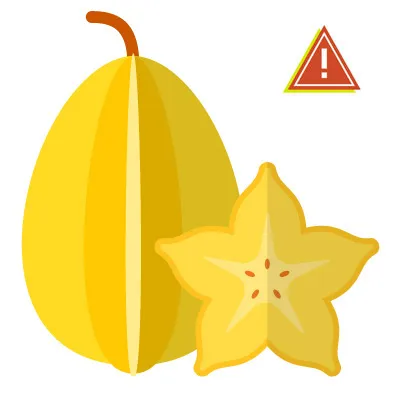 star fruit
star fruit
23. Flavored Water and Seltzer Water
While plain water is essential, flavored or carbonated beverages can contain artificial sweeteners, sugar, or salt that are harmful to dogs. It’s best to stick to fresh, clean water.
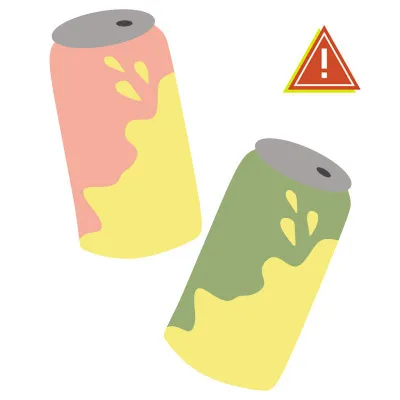 seltzer water
seltzer water
13 Safe Foods for Your Dog
While the list of forbidden foods is long, there are many delicious and healthy options that your dog can enjoy. Introducing new foods gradually and observing your dog for any adverse reactions is always recommended.
1. Apples, Oranges, and Bananas
The fleshy part of apples, without the core and seeds, is safe. Oranges can be given in small amounts, and bananas, minus the peel, make for a nutritious treat.
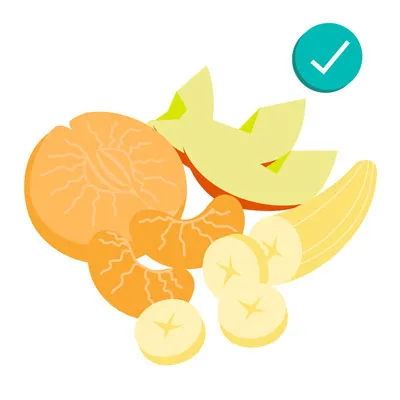 Apples, Oranges, & Bananas
Apples, Oranges, & Bananas
2. Blueberries and Blackberries
These berries are packed with antioxidants, fiber, and vitamin C, making them a healthy addition to your dog’s diet.
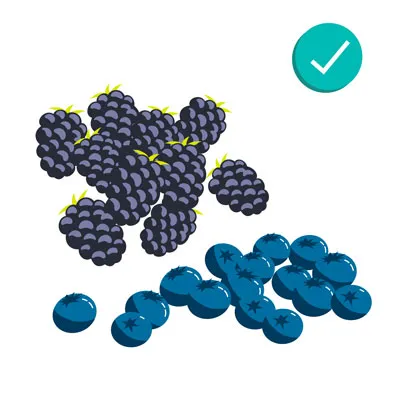 Blueberries & Blackberries
Blueberries & Blackberries
3. Cantaloupe, Mango, Peaches, Pears, Pineapples, and Watermelon
These fruits are safe in moderation, provided seeds, pits, and rinds are removed. Watermelon is particularly hydrating on warm days.
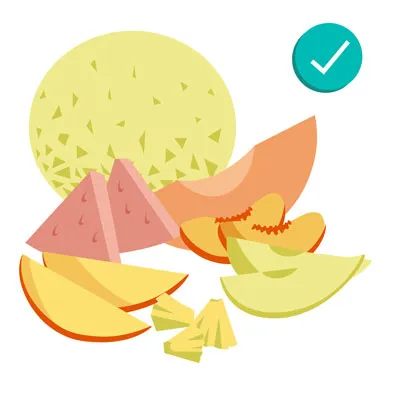 Cantaloupe, Mango, Peaches, Pears, Pineapples, & Watermelon
Cantaloupe, Mango, Peaches, Pears, Pineapples, & Watermelon
4. Carrots, Cucumber, and Celery
These low-calorie vegetables are excellent for weight management and provide a satisfying crunch. They are rich in vitamins and minerals.
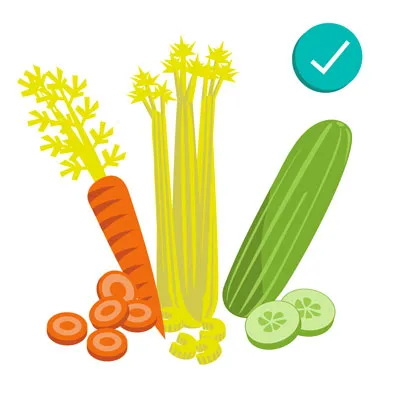 Carrots, Cucumber, and Celery
Carrots, Cucumber, and Celery
5. Cheese
Small amounts of low-fat cheese can be a good treat, provided your dog is not lactose intolerant. Always choose plain, low-fat varieties.
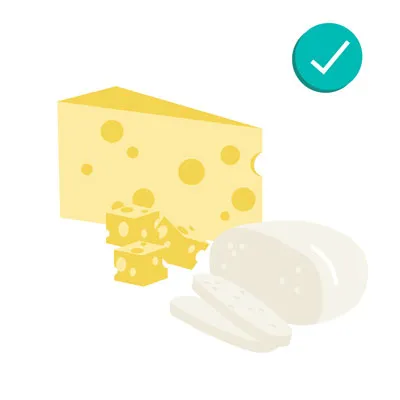 Cheese
Cheese
6. Eggs
Fully cooked eggs are a great source of protein and can be beneficial for soothing an upset stomach.
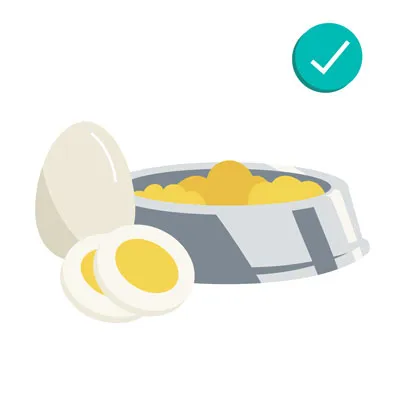 Eggs
Eggs
7. Peanuts, Peanut Butter, and Cashews
Peanuts and cashews are safe in moderation, provided they are unsalted and unseasoned. Peanut butter is a popular, protein-rich treat, but always choose varieties without xylitol.
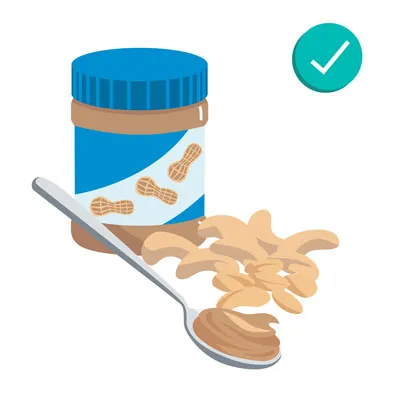 Peanuts, Peanut Butter, and Cashews
Peanuts, Peanut Butter, and Cashews
8. Popcorn and Corn
Plain, air-popped, unsalted popcorn (without unpopped kernels) and corn (off the cob) are safe treats.
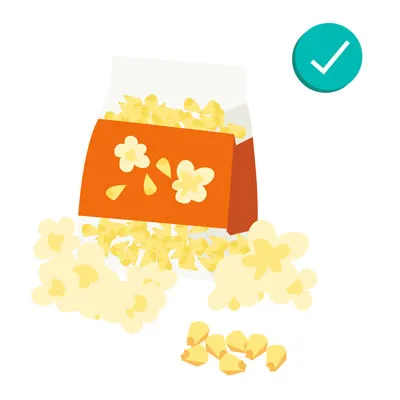 Popcorn and Corn
Popcorn and Corn
9. Coconut and Honey
Small amounts of coconut (milk or oil) can be beneficial, but some dogs may experience stomach upset. Honey is safe in moderation and provides vitamins and minerals.
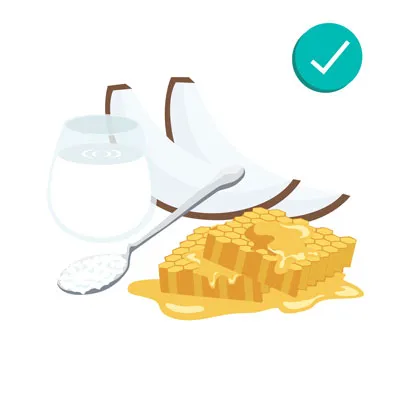 Coconut and Honey
Coconut and Honey
10. Shrimp and Fish
Plain, cooked shrimp and fish (like salmon and sardines) are good protein sources. Ensure they are de-shelled, de-boned, and unseasoned. Limit fish intake to twice a week.
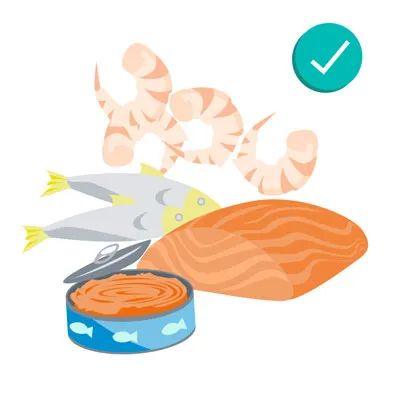 Shrimp and Fish
Shrimp and Fish
11. Turkey
Plain, cooked turkey, with the skin, fat, and bones removed, is a healthy and protein-rich treat.
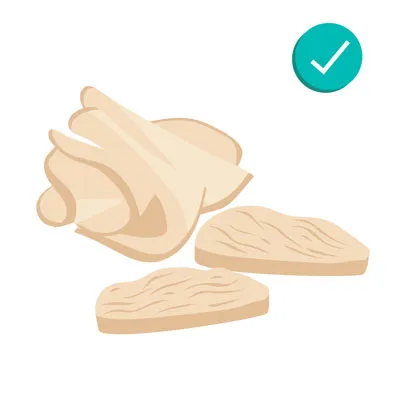 Turkey
Turkey
12. Grains, Wheat, and Quinoa
In moderation, cooked grains like wheat and quinoa are safe and can be part of a balanced diet. Monitor for any allergic reactions.
 Grains, Wheat, and Quinoa
Grains, Wheat, and Quinoa
13. Green Beans
Raw, steamed, or canned green beans (plain, without additives) are a safe, low-calorie, and healthy snack for dogs. Chop them into bite-sized pieces.
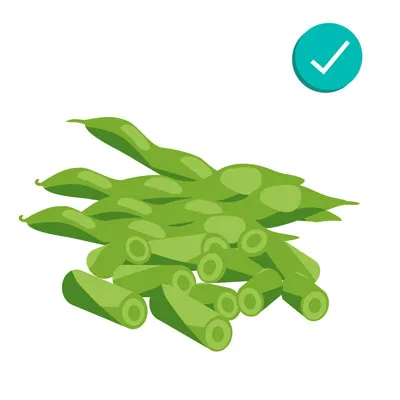 Green beans
Green beans
Dogs Most at Risk from Toxic Foods
While all dogs should be kept away from toxic foods, certain groups are more vulnerable:
- Small Breeds: Due to their lower body weight, even small amounts of toxic substances can have a more severe impact.
- Puppies: Their developing digestive and immune systems make them more susceptible to adverse reactions.
- Elderly Dogs: Pre-existing health conditions common in older dogs can increase their risk.
- Dogs with Pre-existing Conditions: Chronic illnesses like diabetes or kidney disease can make dogs more vulnerable to food toxicity.
Preventing Your Dog from Ingesting Toxic Foods
Proactive measures are key to keeping your dog safe:
- Secure Storage: Keep all potentially harmful foods out of reach, on high shelves or in secured cabinets.
- No Table Scraps: Refrain from feeding your dog directly from your plate or during meal preparation. Provide only dog-specific treats.
- Educate Household Members and Guests: Ensure everyone who interacts with your dog understands which foods are off-limits.
- Holiday Vigilance: Be extra cautious during busy holiday seasons when accidental exposure is more likely.
What to Do if Your Dog Eats Something Toxic
If you suspect your dog has ingested a toxic food, immediate action is crucial:
- Contact Your Veterinarian or Poison Control Immediately: Prompt treatment significantly improves outcomes.
- Provide Essential Information: Be ready to share the type of food ingested, the amount, and the approximate time of consumption.
- Avoid Home Remedies: Do not attempt to induce vomiting or administer any home treatments unless specifically advised by a veterinarian, as some remedies can be harmful.
Conclusion
Navigating the world of human foods for your canine companion requires diligence and knowledge. By understanding what can you not feed your dog and prioritizing their safety, you can prevent dangerous incidents and ensure a happy, healthy life for your furry family member. Always consult your veterinarian for personalized dietary advice and if you have any concerns about your dog’s health.
